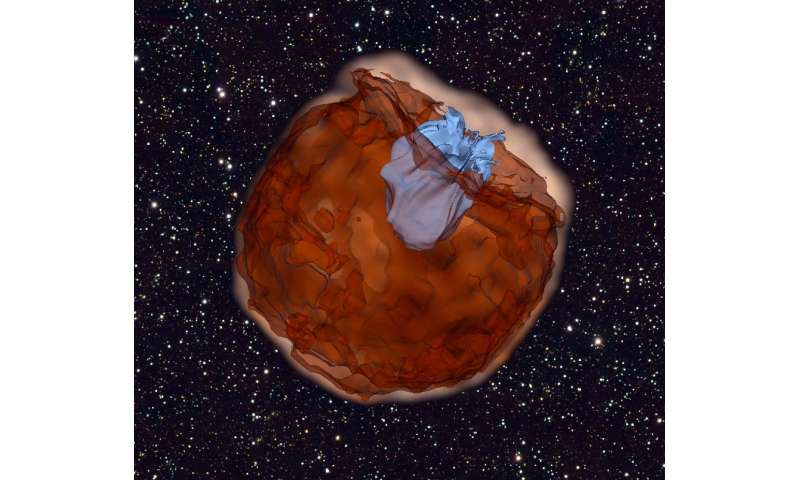Best of Last Week – One in 100,000 chance of asteroid striking Earth, how the first animals appeared and growing hair

It was another big week for space science as a team at the University of Arizona reported that they had caught an exploding supernova early, while it was still young. They were able to record it ejecting material at its companion star. A team of Czech and German researchers reported that a group of stars orbiting a supermassive black hole showed Einstein was right again—the deviations of orbits of stars near to Sagittarius A were found to conform to general relativity. And an international team of researchers found evidence of a white dwarf remnant after a supernova, offering strong evidence that some stars do survive the massive explosion. Also, a team at NASA's Jet Propulsion Laboratory announced that the asteroid Apophis has a one in 100,000 chance of hitting Earth—good news, since the asteroid, due to arrive near Earth in 2029, is almost 400 meters across. And a team at Caltech found a cosmic magnifying lens that revealed inner jets of black holes—and provided the best view yet of blobs of hot gas that are emitted from supermassive black holes.
In other news, a team led by the Australian National University report apossible solution to the mystery of how the first animals appeared on Earth—evidence of the rise of algae. And a team at the University of Sydney found a solution to one of the biggest stumbling blocks to widely commercializing zinc-air batteries, a three-stage method that could revolutionize rechargeability—the new method, they report, can be used to create bifunctional oxygen electro-catalysts for creating rechargeable zinc-air batteries from scratch. Also, a combined team from the Mayo Clinic and St. Jude's Children's Research Hospital announced that they had discovered a fundamental pathology behind ALS. And a pair of physicists with the University of Waterloo and the Perimeter Institute for Theoretical Physics demonstrated how machine learning could tackle quantum error correction using a type of neural network called a Boltzmann machine.
And finally, if you are one of the millions of people upset about losing your hair, you might want to check out work done at UCLA—a team there identified a new way to activate stem cells to make hair grow, which could lead to new drugs that promote hair growth.
© 2017 Science X